heart rate monitor
Latest
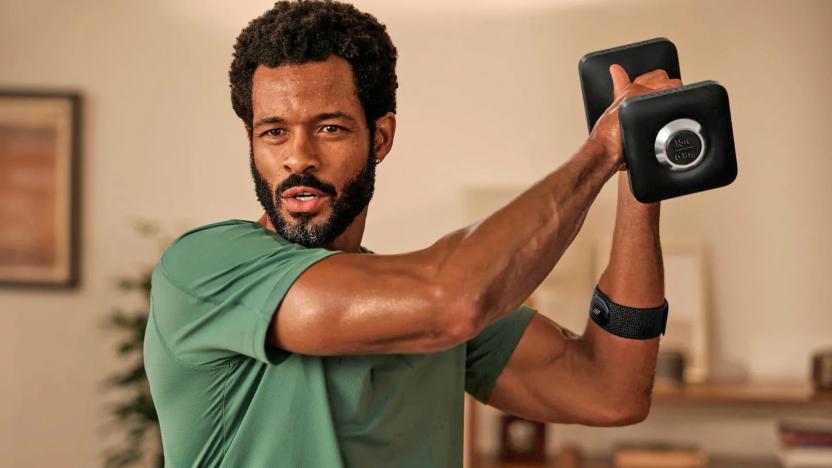
Peloton's $90 armband offers more comfortable heart rate tracking
Peloton has launched a Heart Rate Band for your arm that promises more comfortable tracking than a chest strap.
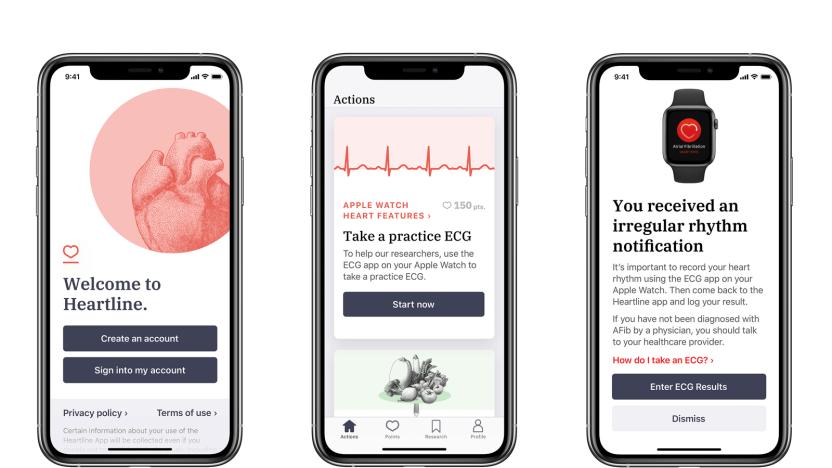
Clinical trial will see if Apple devices can reduce the risk of strokes
Over the past several years, Apple has made efforts to expand the health-related features of the iPhone and Apple Watch. Apps and features like fall detection and high heart rate monitoring provide helpful insights, especially for senior citizens. Last year, Johnson & Johnson announced a study that would explore how these capabilities could reduce the risk of stroke through early detection of irregular heart rhythms. Enrollment in the clinical trial -- called Heartline -- is now open for US residents who are 65 or older, have Original Medicare, own an iPhone 6s or newer and allow access to their Medicare claims data.
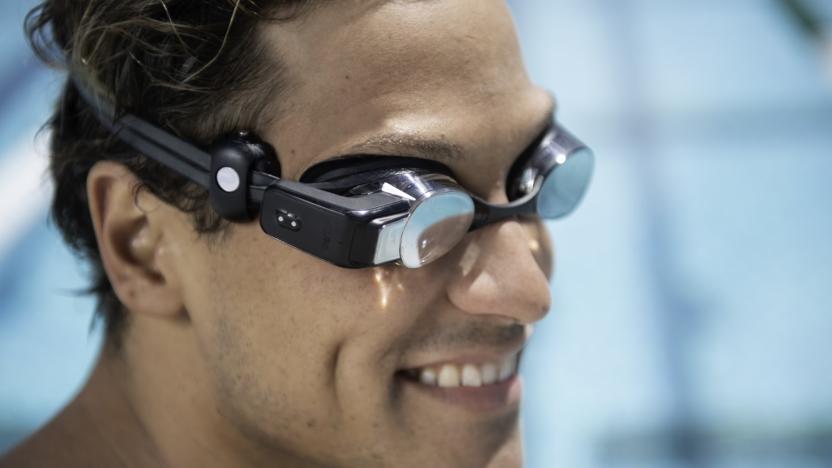
Form's Swim Goggles display heart rate data in the pool
You might have thought Form already perfected the Swim Goggles, but the company is about to add another welcomed feature: heart rate tracking. Today, Form announced that it's teamed up with the fitness wearable company Polar to introduce the heart rate tech. Beginning in November, a free software update from Form will make the Swim Goggles compatible with Polar's OH1 and OH1+ heart rate sensors.
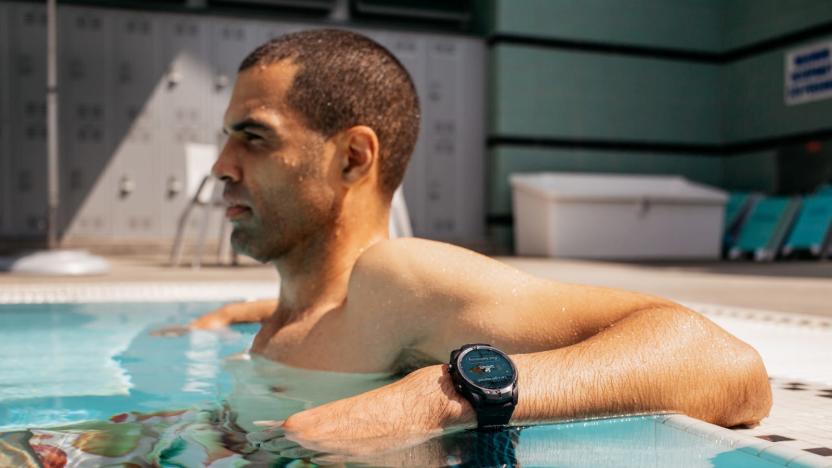
The latest TicWatch Pro includes 4G LTE to free you from your phone
Mobvoi's second generation TicWatch Pro is available today, and the company hopes it will free you from your phone. The Wear OS-powered TicWatch Pro 4G/LTE offers wireless connectivity, so you can receive voice calls and app notifications, send and receive texts and use popular messaging apps. You can also hit an SOS button that will dial 911, and it will automatically sync your data with the cloud -- all without tethering you to another device.

ASUS VivoWatch review: a fitness watch with style and shortcomings
My wife often says I'm fat, but that's hardly a motivation for me to resume my exercise routine. Then the ASUS VivoWatch landed on my desk, so I had no choice but to get back on the treadmill for your amusement. To keep things short, it turns out that this fitness-centric smartwatch does have a couple of compelling features that made me interested in getting fit again -- more so than the other basic (as in no heart rate monitoring) fitness trackers that I've long left in the drawer. Also, the VivoWatch can pair with both iOS plus Android, and costs just under $150 in Taiwan, meaning it'll be going head to head with the similarly priced Fitbit Charge HR around the world. So is ASUS' first fitness device worth trying? Or should you stick to some more mature offerings? Let's take a look.

Nikon's doggy camera mount snaps when Rover gets excited
Dogs, it's fair to say, are easily excited. Walks, treats, sniffing other dogs' butts -- for man's best friend, life is a non-stop thrill ride. Now, to help you capture these moments of canine euphoria, Nikon has developed a camera mount that reacts to their heart rate. So when your favorite pooch spots something particularly awesome, the shutter will fire automatically, giving you an SD card full of the highlights. Nikon's "Heartography" setup consists of two parts -- an elastic heart-monitoring band and a "SmartCase" for the camera. Heart rate data is transmitted over Bluetooth and shown on the mount's OLED display, where you can also tweak the minimum threshold for each new snap. Unfortunately, this appears to be just a kooky R&D project though, rather than a serious consumer product. In the meantime, you'll have to make do with something like GoPro's Fetch mount -- it's lighter and more flexible, but you'll have to scrub through the footage to find the good bits.
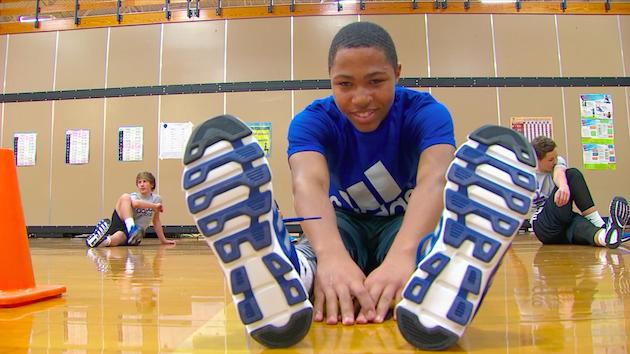
Adidas' next move is to keep young students fit and healthy
In the US, child obesity is an ever-growing concern that's desperately in need of a remedy. Knowing this, Adidas is now looking to help the cause and, in the process, make it fun for young people to get fit. The sporting gear company has teamed up with Interactive Health Technologies (whose mission is "empowering individuals to self-manage their health") to bring its miCoach technology to schools Stateside. A few years ago, IHT began implementing a heart rate monitoring system for gym classes in the US, and now Adidas wants to take that initiative one step further. By combining miCoach's activity tracking with IHT's heart rate system, Adidas believes it can get students to motivate themselves.

HealthPatch biosensor bandage brings clinical-grade monitoring to iOS
It's the ultimate in connected wearables -- a small and inexpensive, clinical-grade biometric sensor system that can continually monitor your vital signs. Vital Connect has developed the HealthPatch, which is a system that uses disposable adhesive bandages and a reusable wireless module to replace chest strap and wristband type fitness trackers, as well as expensive medical monitors. Now the company and developer SweetWater Health are announcing the first commercially available app to work with the HealthPatch: SweetBeatLife (US$9.99). First, let's talk a bit more about the HealthPatch ($199). It is equipped with electrocardiogram (ECG) electrodes, a 3-axis MEMS accelerometer, and a thermistor to measure skin temperature. While all of this used to take an external box and a pile of electrodes (akin to a Holter monitor), now it's all down to a small blob of electronics, an adhesive bandage, and your iOS device. At this point, the HealthPatch measures heart rate, heart rate variability (HRV), respiratory rate (RR), skin temperature, body posture (including detection of falls and their severity), steps, stress, and sleep staging. Link your HealthPatch with SweetBeatLife, and suddenly you have medical measurements at your fingertips. The app does stress monitoring, and can use the HRV readings to provide training suggestions (i.e., "do a low exertion workout tomorrow"). The app can even determine if you're sensitive to certain foods, as your body reacts by elevating heart rate after eating an offending food. For professional and amateur athletes, tracking your heart rate recovery after exercise can show just how your training is progressing. We'll be checking out the HealthPatch and SweetBeatLife soon, so be sure to keep an eye out for that review on TUAW.

Wellograph is an activity tracker with good looks and fun graphs (hands-on)
One of the latest entrants to the crowded wearables market is an activity tracker that you might actually want to wear on a night out. The Wellograph, a device with a sapphire crystal display, features a heart rate monitor and an activity tracker, and -- gasp -- it's a standalone device, with no smartphone integration to speak of beyond syncing with Bluetooth 4.0. Sarasin Art Booppanon, CEO of Wellograph, told us his product stands out from other activity trackers by displaying information such as steps taken and heartbeats per minute in graph form (rather than simply displaying digits). Another distinguishing feature: the sapphire crystal display, allegedly the first to appear on a moderately priced consumer product. This type of screen is known for its scratch-resistance, and while that's not something we could easily put to the test here at CES Unveiled, we can tell you it looked (and felt) pretty sturdy.

Heart Beat Rate Pro measures pulse with iPhone camera
Heart Beat Rate Pro (US$1.99) represents one of a new breed of iOS apps that measures your pulse using the iPhone's built-in camera. It works by holding your finger over the camera. With the built-in flash illuminated, the app counts your heart beats, automatically detecting your pulse. I tested the app on several subjects, simultaneously using a pulse oximeter reading for comparison. What I found was that for casual use, the app did a pretty good job, all things considered. There were, however, drawbacks compared to the pulseox. First, it took a lot longer to sync the signal. The fingertip unit could pick up a pulse in just a few seconds. The app took nearly a minute of synchronization and measurement. And, there were times when the app failed to sync, so couldn't measure the pulse at all. Second, the app was a lot less accurate moment-to-moment. Although the results were pretty good on average, the immediate measurements were sometimes off by a bit. The results improved over time, as the sync grew steadier. The values towards the end of each minute's trial were better than the ones at the start. For example, on one trial, I got a reading of the low 50s on a pulse that was actually in the 90s. It caught up by the end of the trial. Finally, I found that there's a bit of a trick on using the app. You need to have the subject hold the phone with one hand, placing his or her finger over the camera hole. Reversing this position provided insufficient coverage over the camera. In the end, this is a nice little app for runners and anyone else who does exercise. If you don't like standing with your finger over your wrist, counting while watching a second hand, it offers a workable alternative. For those who are really serious about self-monitoring, you might want to pick up a normal athlete's monitoring system or buy a pocket pulseox unit instead.

Researchers create video game that monitors heart rate to keep children's anger in check
Nintendo may have left its Vitality Sensor by the wayside, but researchers at Boston Children's Hospital are using heart rate monitoring in a video game to teach children with anger issues how to temper their emotions. Dubbed RAGE (Regulate and Gain Emotional) Control, the game tasks players with blasting hostile spaceships while keeping their heart rate from exceeding a predefined limit. If a gamer's pulse rises above the ceiling, they'll lose the ability to shoot until they can ease their pulse back down. A group of 18 kids who received standard treatments and played the game for five, 15-minute-long sessions had better control of their heart rate and lower anger levels than a group that only used traditional treatments. Currently, a controlled clinical trial of RAGE Control is underway and there are plans to take the concept a step further with toys and games suited for younger children. Look out below for the full press release or tap the second source link for the team's paper in the Journal of Adolescent Psychiatry. [Image credit: Thirteen of Clubs, Flickr]

Prototype heart monitor collar could let sheep text their shepherd, tattle on creeping wolves
It's easy to imagine the lonely Swiss shepherd casually texting his pals during a long day in the field, but reading an SMS from his flock? More possible then you might think. A recent trial in Switzerland outfitted 10 sheep with heart monitoring collars and submitted them to a simulated wolf attack, causing their heart rate to jump from 60 / 80 BPM to 225. The team behind the experiment hope to pair the significant change in heart rate with a future device that releases a predator deterrent while simultaneously sending a text message to the local shepherd. Complete prototypes are being prepped for a 2013 trial in Switzerland and France, where wolf attacks are on the rise. The devices hopes to offer owners of smaller flocks an affordable alternative to keeping a sheepdog. [Image credit: Shutterstock]

Motorola discounts the MOTOACTV $100, hopes you're still in bikini slim-down mode
Still in the middle of your seasonal weight loss regimen? Well, if you're in the market for a new fitness wearable, Motorola has dropped the price on its MOTOACTV to $149.99 for the 8GB model, $199.99 for the 16GB version and $299.99 for the Multi-Sport Edition. Need a quick refresher? You can expect to keep track of your running, biking, golfing and other sporty exploits alongside GPS, MP3 playback, heart rate monitor and Bluetooth. You'll also be able to brag about those progress updates with your Facebook and Twitter mates alongside the $100 price cut. Ready to commit? Hit that source link below to do just that.

Sony patent proposal ponders planting physicians inside your plasma
Remember when Sony said it would "unify" its product lines and consider going into the medical device business? Well, we've unearthed this patent application from 2010 that does that just. A wireless wristband monitors your heart rate, vitals and blood glucose levels, and beams that information to your TV over infra-red. Your data will then update in real time for you to watch of an evening, if it's a choice between that and Gossip Girl, at least. Moreover, if your TV is web-connected, it could even send emergency messages to your local HMO if the conclusion of your favorite show / sporting event sends you into chest-clutching fits of apoplexy.

Recon Instruments touts SDK for GPS-enabled ski goggles, polar heart rate monitor compatibility in tow
Like clockwork, Recon Instruments is choosing CES once again to launch its next functionality improvement for those futuristic GPS-enabled ski goggles that we first saw in 2010. This year's revelation is the impending launch (May 2012, to be precise) of a software development kit for the Android-based MOD Live -- a little diddy we sat down with a few months back. Moreover, there's soon to be support with the Polar WearLink+ transmitter with Bluetooth. The MOD Live near-eye device enables skiers and riders to see a hodgepodge of instant (and useful) information, and with an SDK on the way, the amount of available data is sure to increase. We're told that the outfit's working with "strategic partners" to bring specific apps to the table, where users will see things like 2D graphics at up to 30fps, location / speed / altitude registers, time / jump analytics and free fall detection. Head on past the break for the full PR, and go ahead and book yourself a trip to the arctic in May; something tells us Whitefish, Montana's going to be mostly green by then.

Basis unveils web dashboard for Basis Band health tracker, makes it easy to see how unhealthy you are
The Basis Band is a health tracking watch with optical sensors that track your heart rate, an accelerometer to see how active you are, galvanic skin response to measure your perspiration, plus ambient and skin temperature sensors. All that data gets run through a few Basis algorithms to create a picture of your health that's displayed in the handy-dandy web portal you see above. The dashboard is meant to make your data digestible so you can create (and meet) your health goals, and there's both game mechanics and social media integration to keep you motivated. Of course, you can access the raw data if you're into tracking pulse rates and perspiration levels. We got a chance to speak with company CEO Jeff Holove about Basis, and he said it's meant to enable the every man to track his health during regular daily activities -- as opposed to similar products from Garmin and Polar that are aimed at athletes. If that sounds good to you, the Basis Band comes out in "early 2012" for $199, and the cloud service will be free for those who buy in. PR and a video are after the break.

Google Health's New Year's Resolution is to cease to exist, countdown begins to save your data
Back in June, Google announced that it would be 'retiring' Health effective January 1, 2012. Now, everything appears to be on-track for the shutdown, with Google sending out a final reminder to Health customers earlier today. You have until the stroke of midnight to access the service or port your data to a competitor -- after which point you'll no longer be able to view information saved to your account, though it'll remain available to download in .zip format for another year. Want to know more? Hit up the source link for the Google Health FAQ.

Wahoo Fitness' iPhone 4S-compatible Blue HR heart rate monitor ships in January for $80
Remember that Wahoo Fitness Bluetooth 4.0 heart rate monitor we showed you last month? Here she is again. The company's proper unveiling of the device will come at CES 2012, linking up exclusively (at first, anyway) with the iPhone 4S and other Bluetooth Smart Ready devices. By tapping into the Blue HR and harnessing your fitness app of choice (a nice touch, we must say), you'll have access to heart rate data, music playlists, phone, maps, etc., all in one place. It'll start shipping in January for $79.99, and we're told that the product will launch with "full support of several of Wahoo Fitness' app partners, who have been working with Wahoo's Open API to support the Blue HR." A few compatible apps have already filtered into the App Store, including MapMyFitness, RunKeeper, 321Run, Runmeter, and MotionX, and the company's expecting even more in 2012. Full PR is after the break, no galloping required.

Oregon Scientific trots out Gaiam Touch button-free heart rate monitors
They're being hailed as the first button-free, touch screen heart rate monitors, with Oregon Scientific and Gaiam teaming up to produce the wearable SE338M and SE336. According to the companies, these things are a scant two millimeters thinner than any competing product on the market, and they've even captured an International CES Innovations 2012 Design and Engineering Award in the Health & Wellness category. Looking more like a watch than a fitness / health tool, the Touch line supports both wrist and chest-worn options, utilizing ECG technology that requires but a single touch of the finger on the monitor's sensor for an accurate heart rate reading. For those eying the strap model, that one operates in digital and analog modes and tracks fat burned, though the strap-free model will also track calories burned and heart rate data. Predictably, you'll also find a stopwatch, zone alarm, clock and calendar, and those itching to find a stocking stuffer this early can plop down $99.99 to $109.99 right now at the Oregon Scientific Online Store, Target, Sports Authority, Academy Sports, MC Sports and Athleta.

Wahoo Fitness bringing $80 BlueHR heart-rate belt to iPhone 4S users
Remember that nondescript heart-rate monitoring belt we peeked back in June? Now you know the company that's tossing out purchase orders for 'em. Wahoo Fitness has just revealed that it'll soon be shipping its own branded version of the product -- dubbed BlueHR -- and at least for now, it'll work exclusively with the iPhone 4S. Why, you ask? The 4S just so happens to have Bluetooth 4.0, and this here belt happens to utilize that very protocol. In a brief demo vid (embedded after the break), the company demonstrates it beaming out vitals to a nearby iPhone, and we're told that it'll be "compatible with all the top running apps like Runkeeper [as well as with] Wahoo's own free app." We're guessing that the outfit will do everything it can to have this guy out by Christmastime, but for now, you can start pinching pennies in an effort to afford the looming $79.99 sticker.














